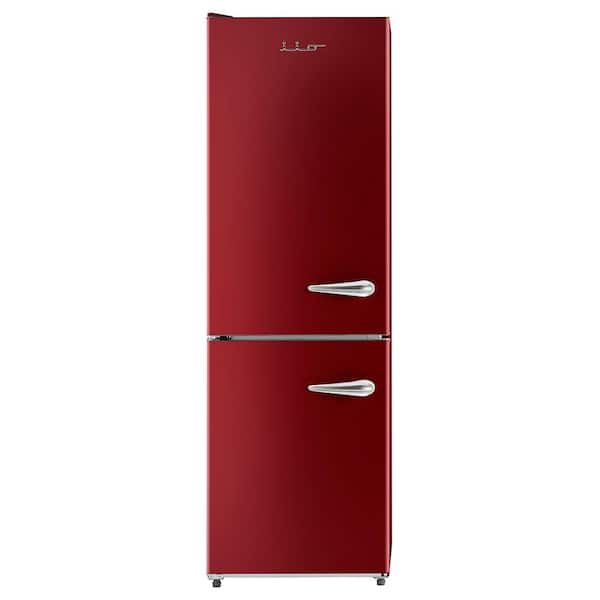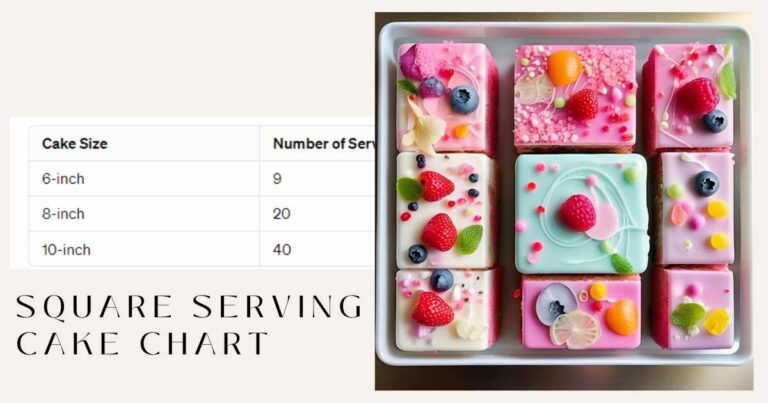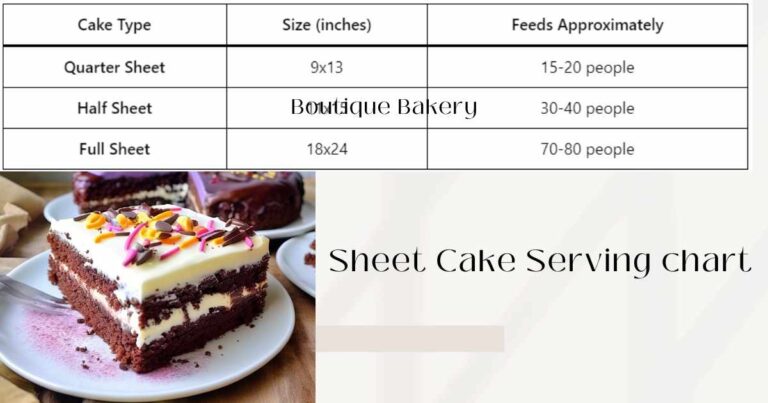No, red wine should not be refrigerated as it can alter its taste and aroma. Red wine should not be stored in the refrigerator because the cold temperature can dull its flavor and aroma.
When red wine is chilled, the tannins become more pronounced, creating a bitter and astringent taste. Additionally, refrigeration can also cause the formation of sediment in the wine, impacting its overall quality. It is best to store red wine in a cool, dark place with a consistent temperature to preserve its integrity.
Proper storage allows the wine to age gracefully and develop complex flavors. So, avoid refrigerating red wine and opt for appropriate storage conditions to enjoy its fullest potential when serving.
Why Refrigerating Red Wine Can Be Controversial
Refrigerating red wine can be a topic of debate among wine enthusiasts. Opinions on whether or not to chill red wine vary greatly. Factors such as personal preference, wine type, and serving temperature play a role in the decision-making process.
Some argue that chilling red wine can enhance certain flavors and aromas, particularly in lighter-bodied or fruity reds. However, others believe that refrigeration can stifle the complexity and nuances of red wine, leading to a less enjoyable drinking experience. Ultimately, it comes down to individual taste and the specific characteristics of the wine.
Experimentation and finding what works best for you is key in determining whether to refrigerate red wine or not.
Why People Refrigerate Red Wine
Refrigerating red wine is a practice that can be motivated by various factors, often driven by the desire to enhance the overall wine experience. Here are a few reasons and scenarios where refrigerating red wine can be a beneficial choice:
- Preservation of Wine Quality: Red wines, especially the lighter and more delicate varieties, are susceptible to temperature fluctuations. Refrigeration offers a solution to this issue by creating a controlled environment. Wine coolers and refrigerators provide a consistent, cool storage environment, safeguarding red wine from heat damage. Keeping the wine at a stable and lower temperature helps maintain the wine’s freshness and flavor, allowing it to age more gracefully.
- Hot Summer Days: Sipping on a lightly chilled red wine can be incredibly refreshing during scorching summer months. Light-bodied red wines like Pinot Noir or Gamay can benefit from a slight chill. The cooler temperature highlights their fruitiness and provides a delightful contrast to the heat, making them more enjoyable when the weather is warm.
- Outdoor Gatherings: When hosting a casual outdoor gathering or picnic, slightly chilled red wine can be a crowd-pleaser. It pairs well with a variety of picnic foods and complements the relaxed, outdoor atmosphere. Offering a red wine experience that suits the occasion and temperature can enhance the overall gathering.
- Quick Enjoyment: Sometimes, you may find yourself wanting a glass of red wine quickly without the extended decanting process. In such cases, a brief stint in the refrigerator (around 15-20 minutes) can help cool the wine slightly. This approach doesn’t dramatically alter the wine’s character but can make it more enjoyable if you’re pressed for time.
Refrigerating red wine enables the adjustment of the serving temperature to accommodate various occasions and personal preferences. This practice harmonizes tradition and practicality, ultimately elevating the overall wine-drinking experience.
Understanding Optimal Red Wine Storage Temperature
Understanding the optimal storage temperature for red wine is crucial to maintaining its quality. Red wine should not be refrigerated, as the low temperature can affect its flavor and aroma. Instead, it is recommended to store red wine at a consistent temperature between 55-65°f (12-18°c).
This range allows the wine to age gracefully and develop its full potential. Maintaining the right temperature is especially important for red wine because excessive heat can cause it to spoil and become undrinkable. Fluctuations in temperature can also lead to the expansion and contraction of the liquid inside the bottle, potentially damaging the cork and allowing oxygen to enter.
Therefore, it is essential to store red wine in a cool, dark place away from direct sunlight and extreme temperature changes. By following these guidelines, you can ensure that your red wine stays in optimal condition for enjoyment.
Different Types of Red Wines
Recognizing the Diversity of Red Wines
Red wines offer a diverse range of flavors and characteristics, influenced by factors such as grape varieties, regions, and winemaking techniques. This results in various categories of red wines, primarily based on their body, which plays a crucial role in determining the appropriateness of refrigeration.
- Light Red Wines: Light red wines like Pinot Noir and Gamay are known for their subtlety. They have a paler color, lower tannins, and fresh, fruit-forward flavors. These wines often have floral and herbal notes and are versatile with food pairings. Ideal serving temperature: 55°F to 60°F (12°C to 16°C).
- Medium Red Wines: Merlot, Sangiovese, and Zinfandel fall into the medium-bodied category, striking a balance between light and full-bodied wines. They offer more complex flavors and moderate tannins, making them adaptable to a variety of dishes. Ideal serving temperature: 60°F to 65°F (16°C to 18°C).
- Full-Bodied Red Wines: Bold and robust, full-bodied red wines like Cabernet Sauvignon and Syrah have intense flavors, higher tannin levels, and deep colors. They often benefit from aging. They pair well with rich, hearty dishes. Ideal serving temperature: 65°F to 70°F (18°C to 21°C).
To fully appreciate the unique characteristics of red wine, it is crucial to serve it at the appropriate temperature. The temperature has a significant impact on the wine’s aroma, flavor, and overall experience. Whether or not to refrigerate red wine depends on its body and personal preference. Exploring different serving temperatures can be an enjoyable way to discover the diverse world of red wine.
When Refrigerating Red Wine Is Acceptable
Refrigerating red wine may seem unconventional, but there are situations where it is acceptable. For certain types of red wine, such as lighter-bodied varieties like Beaujolais or Lambrusco, chilling them can enhance the drinking experience. These wines are known for their fruity and refreshing notes, which are accentuated when served slightly chilled.
Additionally, if you prefer your red wine on the cooler side, refrigeration can help achieve that desired temperature. It’s important to note, however, that not all red wines are suitable for chilling. Full-bodied and heavily tannic reds, like cabernet sauvignon or syrah, are best enjoyed at room temperature to fully appreciate their complex flavors and aromas.
When considering refrigerating red wine, remember to take into account the specific type and your personal preference for temperature. Experimenting with chilled red wines can be a delightful way to experience new flavors and sensations.
Tips For Refrigerating Red Wine Properly
Refrigerating red wine is a topic that often elicits debate among wine enthusiasts. While some believe that red wine should never be refrigerated, the truth is that it can benefit from a short stint in the fridge. When it comes to refrigerating red wine, there are a few tips to keep in mind.
Firstly, make sure to store the bottle upright to prevent the cork from drying out. Additionally, avoid storing red wine in the coldest part of the fridge, as this can mute its flavors. Instead, opt for the bottom shelf or the refrigerator door.
Moreover, it’s important to remember that refrigeration can alter the taste of red wine, so it’s best to only chill it for a short period of time. Lastly, be mindful of common mistakes when refrigerating red wine, such as exposing it to drastic temperature changes or leaving it in the fridge for too long.
By following these guidelines, you can ensure that your red wine is properly refrigerated and enjoyed to its fullest potential.
Effects Of Refrigeration On Red Wine Flavor And Aroma
Refrigerating red wine can have a significant impact on its flavor and aroma. The cold environment can dull the taste and diminish the aromatic qualities of the wine. When stored at low temperatures, red wine can lose its complexity and become less enjoyable to drink.
However, there are strategies to counteract these negative effects. First, let the wine come to room temperature before serving, allowing it to regain its full flavor. Second, minimize the amount of time the wine spends in the refrigerator, especially if it’s intended for immediate consumption.
Lastly, consider using a wine cooler instead of a regular refrigerator, as wine coolers provide more consistent temperatures. By employing these techniques, you can prevent the negative effects of refrigeration and ensure that your red wine maintains its delicious taste and aroma.
Storing Opened Red Wine In The Refrigerator
Storing opened red wine in the refrigerator requires following best practices to maintain its quality and shelf life. When it comes to refrigerated red wine, it is important to understand the considerations related to its freshness and taste. Refrigeration helps slow down the oxidation process of the wine, preserving its flavors and aromas for a longer time.
However, it is necessary to seal the bottle tightly with a wine stopper or cork to prevent air exposure. Additionally, storing the opened red wine at a consistent temperature, preferably between 40-65°f (4-18°c), ensures optimal conditions. Moreover, it is vital to keep the wine away from light and avoid any temperature fluctuations.
Following these guidelines will ensure that your opened red wine stays fresh and enjoyable for an extended period. Storing it properly in the refrigerator enhances its longevity and maintains its quality for future consumption.
Alternative Cooling Methods For Red Wine
Refrigerating red wine is a widely debated topic in the wine community. While some argue that serving red wine at room temperature is the best way to enjoy its full flavor, others prefer a chilled glass of red. If you’re in the latter category and want to cool your red wine without using a refrigerator, there are a few alternative methods you can try.
One option is to use an ice bucket or a wine chiller sleeve to keep your red wine at the perfect temperature. Another alternative is to place the bottle in a cool water bath or wrap it in a damp cloth and put it in front of a fan.
These methods can help bring down the temperature of your red wine and ensure it is refreshingly cool without compromising its taste. However, it’s important to consider the pros and cons of each method before deciding which one is right for you.
Serving Red Wine at the Right Temperature
The Importance of Serving Wine at the Correct Temperature
Serving wine at the correct temperature is essential for a fulfilling wine experience. Temperature directly affects the wine’s aroma and flavor, ensuring that you experience the full range of its characteristics. Here’s why it’s crucial:
- Temperature influences the volatility of chemical compounds in wine.
- Serving wine too cold or too warm can mask or accentuate specific elements.
- The right serving temperature allows the wine to express its true character.
B. Tips for Achieving the Ideal Serving Temperature
Achieving the ideal serving temperature for red wine involves some practical steps:
1. Proper Storage: Ensure your wine is stored in a cool, dark place away from temperature fluctuations and strong odors. Wine coolers or cellars are excellent for maintaining consistent storage temperatures.
2. Chill Gradually: If the wine is at room temperature, don’t rush the cooling process. Place it in the refrigerator for about 15-20 minutes before serving to avoid shocking the wine.
3. Experiment: Don’t hesitate to experiment with serving temperatures. Personal preferences vary, and you might discover that you prefer a particular red wine slightly cooler or warmer than the recommended range.
4. Wine Accessories: Consider using wine thermometers to monitor the wine’s temperature accurately. Wine buckets filled with ice and water can help maintain the serving temperature during a meal or event.
By adhering to the significance of serving wine at the appropriate temperature and implementing the suggested guidelines, you can elevate your red wine indulgence. Delving into the temperature variations is a pleasurable approach to discovering the subtleties of diverse red wines and identifying the ideal serving temperature that complements your palate.
Deciding Whether To Refrigerate Red Wine
Refrigerating red wine is a personal choice that can vary according to individual preferences and experimentation. When deciding whether to refrigerate red wine, several factors come into play. It’s important to consider the type of red wine, as lighter-bodied reds like Beaujolais and Pinot Noir can benefit from a slight chill.
Additionally, the serving temperature and the occasion should be taken into account. If you’re enjoying the wine outdoors on a warm day, refrigeration can help maintain its refreshing qualities. However, if you’re savoring a complex and full-bodied red, refrigeration may dull its flavors and aromas.
Ultimately, it’s best to experiment and find the temperature that suits your personal taste. So, whether you choose to refrigerate your red wine or not, it’s all about finding your perfect sip.
How to Enjoy Red Wine to the Fullest
Understanding the Sensory Aspects of Wine Tasting
Wine tasting engages all your senses, offering a multi-faceted experience. To fully savor red wine, consider the following aspects:
- Visual Examination: Begin by observing the wine’s color and clarity against a white background. Note its shade and check for clarity.
- Swirling and Observing Tears: Swirling the wine releases its aromas and allows you to notice the “tears” or “legs” as the wine clings to the glass, providing insights into its body and alcohol content.
- Aromas and Bouquet: Gently swirl the wine and inhale the aromas. Red wine can offer a wide range of scents, from fruity to earthy or spicy. Identify various notes in the bouquet.
- Taste and Flavor: Pay attention to the initial taste, mid-palate, and finish. Red wines have flavors ranging from fruits to herbs and spices. Analyze the wine’s structure, acidity, and tannins.
- Mouthfeel: Consider the wine’s texture on your palate. Is it smooth or grippy? The mouthfeel contributes to the overall experience.
B. Tips on Aerating and Decanting Red Wine
Enhance your red wine’s flavors and aromas through aeration and decanting. Here are some practical tips:
- Aeration through Decanting: Pour the wine into a decanter or carafe to expose it to oxygen. Light to medium-bodied red wines benefit from 30 minutes to an hour of aeration, while full-bodied reds may need a few hours. Swirling the wine in the decanter speeds up the process.
- Proper Glassware: Choose the right wine glass. Red wine glasses have a wide bowl that aids aeration and allows for proper swirling. The glass’s shape directs the wine to the right parts of your palate.
- Serving Temperature: Serve decanted wine at the appropriate temperature. Remember that aeration can also affect the wine’s temperature.
Aerating and decanting red wine can enhance its complexity and potentially soften any harsh tannins present. It is important to note that not all red wines necessarily need extensive aeration. Therefore, it is advisable to remain open to experimentation and rely on your palate to determine the most suitable approach for each individual bottle.
Frequently Asked Questions On Do You Refrigerate Red Wine
Should Red Wine Be Refrigerated After Opening?
Refrigerating red wine after opening can help preserve its flavors and slow down the oxidation process. However, keep in mind that refrigeration can mute some of the wine’s aromas and flavors, so it’s best to allow it to come to room temperature before serving.
How Long Can You Keep An Opened Bottle Of Red Wine In The Fridge?
An opened bottle of red wine can usually last for about 3-5 days in the refrigerator. To prolong its freshness, make sure to reseal the bottle tightly with a cork or stopper and store it upright to minimize oxidation.
Can You Serve Red Wine Directly From The Fridge?
While it’s generally recommended to serve red wine at a slightly lower temperature than room temperature, serving it directly from the fridge may make it too cold. To enhance its flavors, allow the wine to warm up a bit after taking it out of the refrigerator.
What Is The Ideal Serving Temperature For Red Wine?
The ideal serving temperature for most red wines is between 60-68°f (15-20°c). This allows the wine to showcase its full range of flavors and aromas. You can achieve this by taking the red wine out of the refrigerator and letting it sit at room temperature for about 15-20 minutes before serving.
Can Refrigerating Red Wine Affect Its Taste?
Refrigerating red wine can slightly alter its taste by muting some of its aromas and flavors. However, if you prefer your red wine slightly chilled, it can still be enjoyable. Experiment and find your own preference by trying different serving temperatures and see what works best for you.
Does Refrigeration Affect The Aging Process Of Red Wine?
Refrigerating red wine can slow down the aging process due to the colder temperature. This can be beneficial if you’re planning to store the wine for longer periods. However, keep in mind that aging red wines in the refrigerator for extended periods might affect their taste and development.
Conclusion
In the debate of whether to refrigerate red wine, it ultimately comes down to personal preference and the type of red wine being consumed. While refrigeration can help slow down the oxidation process and preserve the wine’s flavor, it’s important to note that not all red wines are meant to be chilled.
Lighter red wines, like pinot noir and Beaujolais, can benefit from a slight chilling to enhance their fruitiness and refreshment. However, heavier reds, such as cabernet sauvignon and merlot, are best served at room temperature to fully bring out their rich flavors and aromas.
As a general rule, if you’re unsure, it’s always recommended to consult the specific wine’s label, or winery advice, or even ask a sommelier. Ultimately, the key is to experiment, find what works best for you, and enjoy your red wine in a way that brings you the most pleasure.
Cheers!







